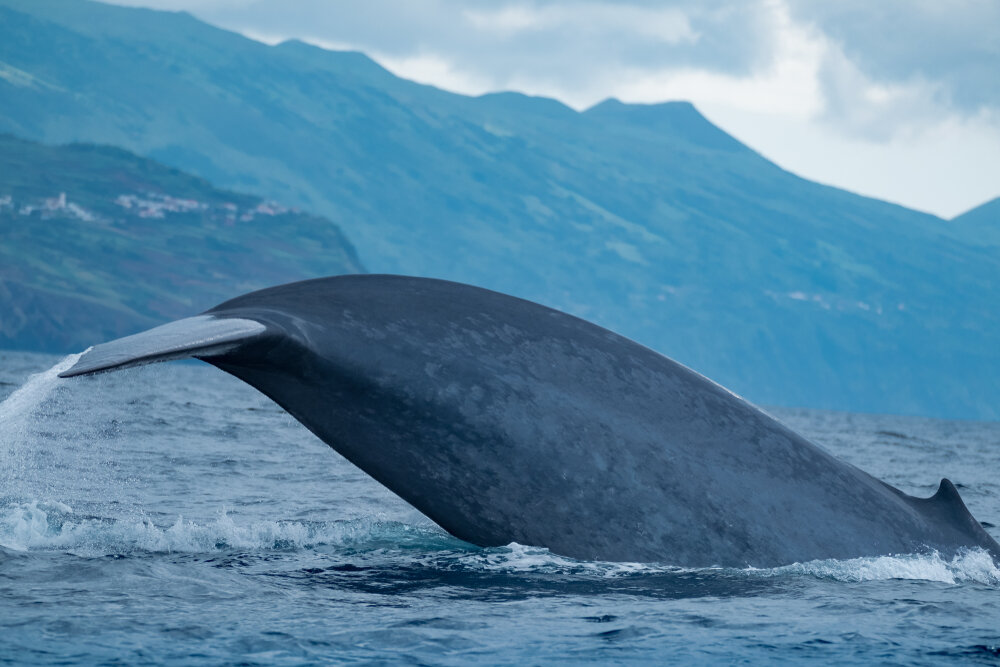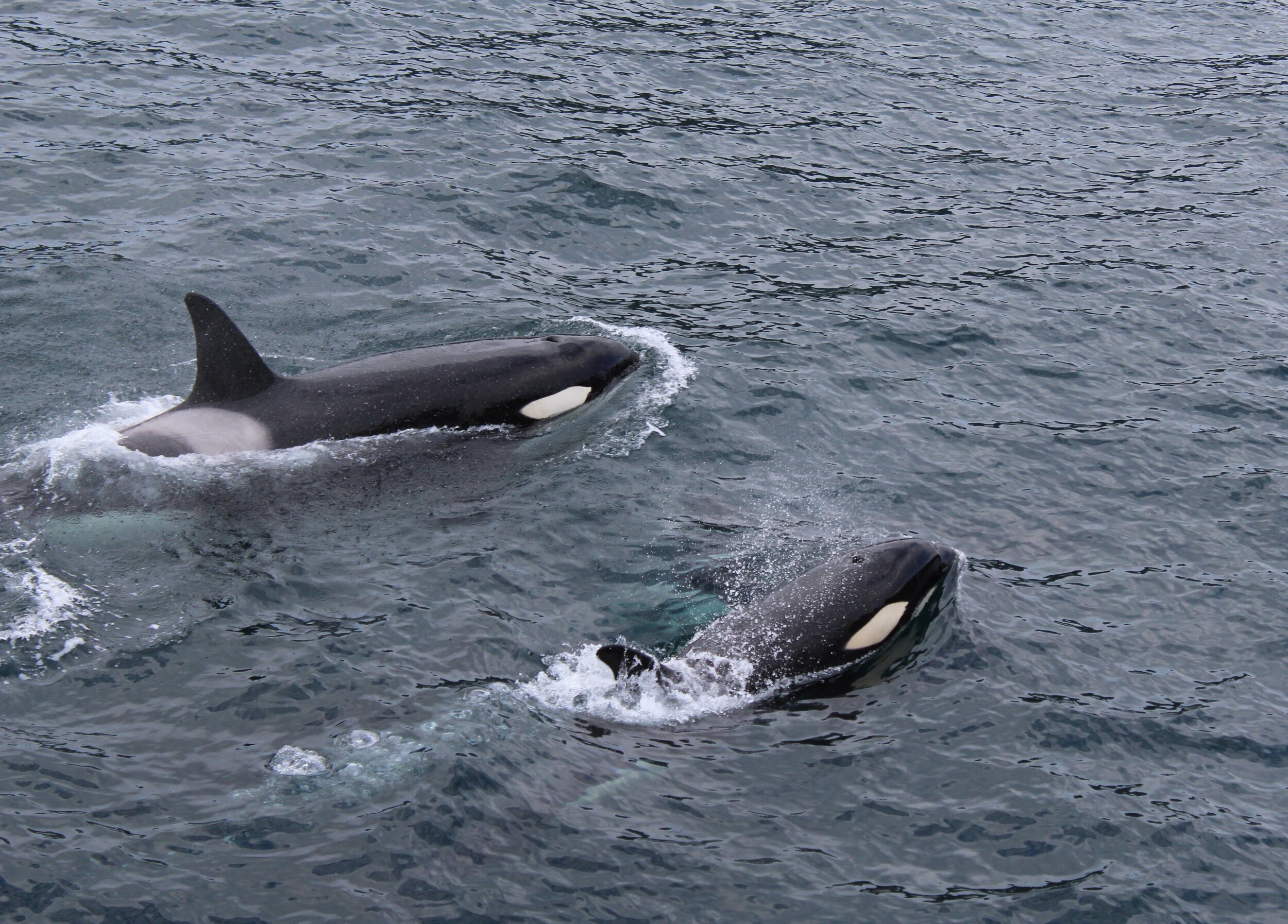
Whale Watching in Iceland:
Must-Read Guide to Whale Adventures

Whale watching in Iceland is an unforgettable experience. Read the complete guide to whale watching in Iceland and make sure you get your whale watching trip right. Learn what to see, where to go, and when to go.
Why is Iceland Whale Watching Some of the Best in the World?
Whale watching in Iceland offers fantastic opportunities to see whales and dolphins. It’s generally considered one of the best whale watching locations in the world. For some, it is the best place in all of Europe. What makes Iceland so special for whale watching?
Over 100,000 whales visit the country of Iceland every year.
Drawn by the rich feeding grounds, a magnificent array of ocean giants gather across the coastlines of Iceland year-on-year to gorge themselves on fish, krill and plankton that proliferate in the cold arctic waters.
Which Whales Can You Find Whale Watching in Iceland?
Iceland home is to many species of whale and dolphin. From enormous lone giants to swells of dolphin pods, you’ll have the chance to see a diverse range of Cetacea when whale watching in Iceland. Here are just some of the animals you might see:
Blue Whale
Humpback Whale
Fin Whale
Sperm Whale
Killer Whale
Minke Whale

What Season is Whale Watching in Iceland?
Whale watching in Iceland is available year-round, with populations of whale such as humpback, fin whale and minke whale remaining in the waters of Iceland throughout the year. However, numbers are lower in the offseason, with your chances of sightings better if you visit at the right time.
So when should you go whale watching in Iceland?
The best months to visit Iceland for whale watching are June, July & August. The summer months are when food stocks are highest and whales are nearly as plentiful as the food they consume. If you can’t visit between June and August, any month within April to October has a very high chance of whale watching success.
What Are The Chances of Seeing Whales in Iceland?
High! Very high.
Visit during the peak season months of April to October and you’ll have a chance of seeing whales on a whale watching tour in Iceland of about 99%. The only real risk to not seeing whales is the weather causing trips to be cancelled.
We recommend that you arrange either multiple trips, or take a whale watching tour in Iceland at the start of your visit to the country. This means if it’s cancelled, you should have time to book another!
Where are the Best Places to Whale Watch in Iceland?
Whale watching in Iceland is available in a variety of different regions across the country. Each offers its own benefits and opportunities. Some locations offer better chances to see particular species of whale, while others offer easier access for travellers who are visiting Iceland to explore the other wonders the country seeks to offer alongside whale watching.
Whale Watching Tours from Reykjavik
The capital city of Iceland, Reykjavik is a coastal town known for its whale watching excursions. Available on almost every day of the year, there are fantastic opportunities available here to jump on a boat straight out of your city hotel and experience the wild coasts of Iceland.
Benefits of Whale Watching from Reykjavik
The most obvious benefit of whale watching from Reykjavik is the convenience and accessibility. You can often walk to the nearest dock from your hotel and find a trip! The best place to spot minke whales in Iceland, as well as great opportunities for humpback whales and white-beaked dolphins, there is plenty to enjoy here. You’ll also get a chance to see nesting puffins if you travel during the summer.
Whale Watching North Iceland
The towns of Húsavík and Akureyri are the go-to locations for whale watching in north Iceland. With some of the oldest established whale watching communities in Iceland, they promise great opportunities to get out on the water and encounter Icelandic whales. Húsavík is often considered the best place in Iceland to go whale watching from.
Benefits of Whale Watching in Northern Iceland
Northern Iceland is known for its bays, fjords and protected inlets, which makes for favourable sea conditions and calm waters, great for anyone who suffers from seasickness or that wants to enjoy scenery with their whale watching tour in Iceland. Here, in these shielded waters, humpback whales are known to congregate en-masse. However, the northern regions are also your best bet for spotting the largest whale in the world, the blue whale, as well as massive fin whales.
Whale Watching West Iceland
Whale watching in western Iceland is focused on the Snæfellsnes Peninsula. Famed for its rugged coastlines and striking scenery, the waters here are teeming with life. Taking a tour out of Grundafjörður, whale watchers in Iceland will be treated to some unique experiences in the vibrant Breiðafjörður Bay.
Benefits of Whale Watching in Snæfellsnes
The waters off Snæfellsnes Peninsula are known for their herring stocks, which draws vast numbers of whales looking to feed. Of particular note here are killer whales. A resident population of Iceland but rarely spotted elsewhere, they are drawn by the hordes of herring, one of their favourite foods. Another exciting sighting near Snæfellsnes is the sperm whale. Not often seen elsewhere in Iceland, sperm whales hunt in the deeper waters around the western coastline of Iceland.
Top Tips for Whale Watching in Iceland
Thinking about going whale watching in Iceland? Chances are you’ll have a great time and see some spectacular animals. For many, whale watching in Iceland is a dream come true. A once-in-a-lifetime experience. But what if this is a once-in-a-lifetime experience? How can you make sure you get the most out of your whale watching adventure?
Visit During Peak Season
Iceland whale watching is available year-round, but sightings in the winter season are much less likely than in the summer. This is simply because in the summer, there is more food closer to the shore, so whales congregate in easy-to-reach places that are perfect for whale watching. You can visit in the offseason and still see whales in Icelands, but for the best whale watching experience, be sure to visit during the summer.
Make Time for Multiple Trips
Whale watching in Iceland is unpredictable. Weather can play part sightings and even stop boats going out, particularly in the winter months. Whales can also be elusive and while a 99% success rate is high, if you consider that thousands of trips are made every year, that means a good handful are not successful. You might also dream of seeing orca, for example, but instead be treated to fin whales on your trip. The best way to make sure you get the whale watching experience you want is to make time available for multiple excursions. Go on a trip early in your visit to Iceland so that if it isn’t what you’re hoping for, you’ve got time to try again!
Bring Plenty of Extra Layers
It’s a given, but Iceland is cold. While mainland Iceland isn’t in the Arctic Circle, it’s just nestling up to it. The winters here are cold, and polar bears are even seen on the north shores from time to time. This is a location where it pays to stay wrapped up and warm, particularly out in open water where winds can be harsh. Make sure you take the layers you need to stay warm.
Prepare for Rough Waters
Not great with motion sickness? Never actually tested your sea-legs before? Whale watching in Iceland may test you. The waters off Iceland are usually okay with a bit of mild chop, but sometimes the winds can really pick up and things can get pretty rough. This is not dangerous or alarming, but it will mean that if you suffer from seasickness, you might not enjoy your trip. The best thing to do is to prepare with motion sickness medication.
Look Out for Ribs & Sailing Boats
Whale watching in Iceland is usually carried out on fairly standard tourism boats. However, there are opportunities to go on faster ribs or eco-friendly sail boats. If you get the chance, we recommend you try these. Sail boats can offer a relaxed and gentle experience great for whales as it limits underwater noise pollution, while ribs can get you around the coastline fast, offering both a thrill and also some opportunities for eye-level encounters.












